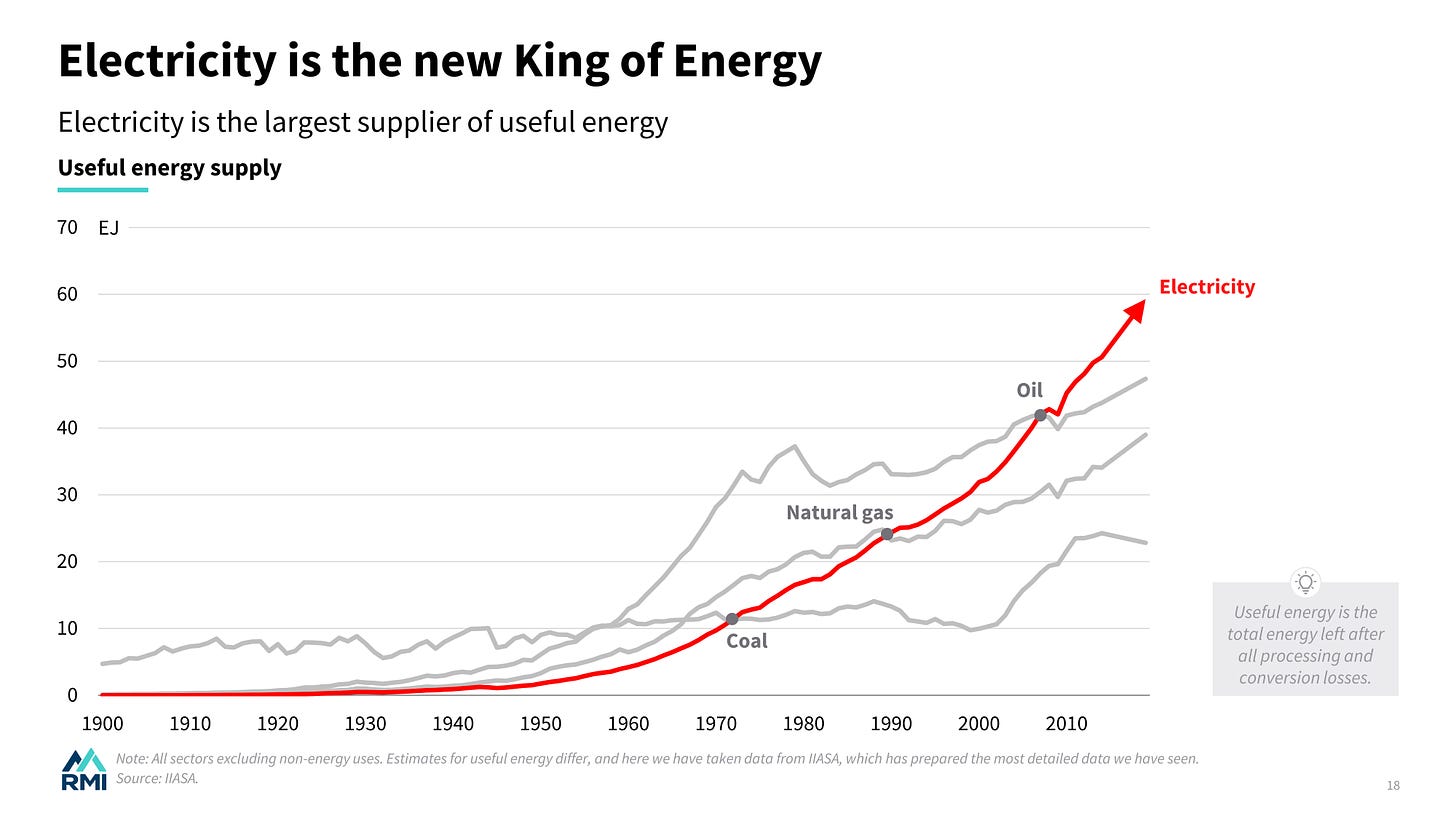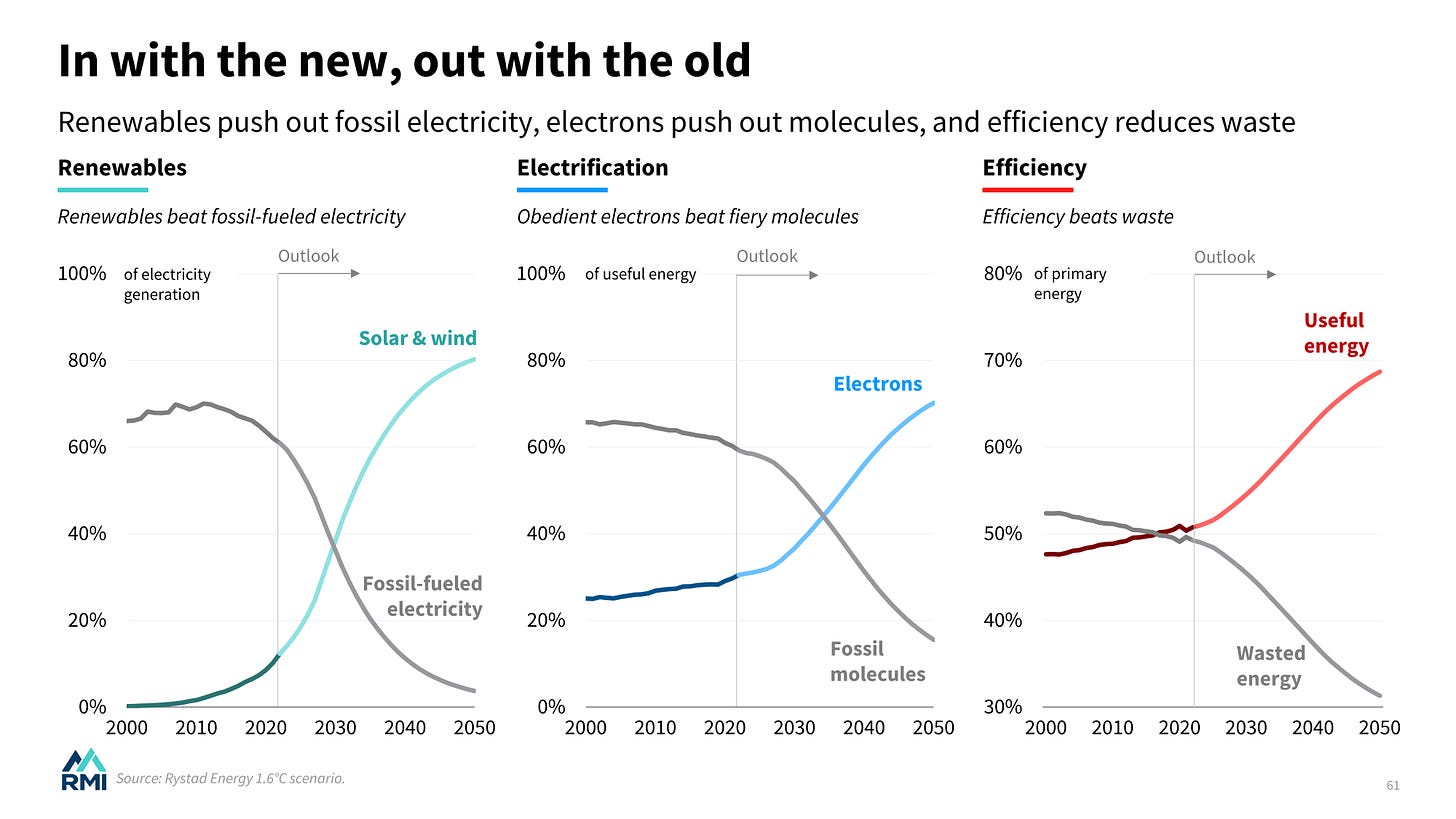Please find attached our annual RMI presentation on the forces transforming the energy system. We focus on the three exponential drivers of renewables, electrification, and efficiency. We look at the remarkable exponential growth observed over the past decade; why rapid change is most likely to continue; the implications of this continuity; and what we need to do next. We look forward to hearing your thoughts.
Summary
•The energy system is being transformed by the exponential forces of renewables, electrification, and efficiency.
•The orthodox view of slow change is wrong. New clean technologies beat old fossil commodities because clean technology costs fall over time on learning curves, they are universal, and they grow quickly.
•Exponential change has been remarkable in the past decade. Cleantech costs have fallen by up to 80 percent, while investment is up nearly tenfold and solar generation has risen twelvefold. Electricity has become the largest source of useful energy, and the deep force of efficiency has reduced energy demand by a fifth.
•Change is led by China. Half the growth in cleantech is from China, but exponential growth is also happening in the OECD and across the Global South as Asia electrifies.
•Red flags across the fossil fuel system. New fossil electricity capacity peaked in 2010, oil and gas capex in 2014, and internal combustion engine (ICE) car sales in 2017. Fossil demand peaked for industry in 2014, for buildings in 2018, most likely for electricity in 2023, and will shortly peak in transport.
•The drivers of growth are more powerful than the barriers. Falling cleantech costs, the energy security of eternal renewables, Chinese leadership, and a race to the top will continue to overwhelm a fragile fossil fuel system which wastes two-thirds of its primary energy and fails to pay for its externality costs.
•So exponential growth of cleantech will continue. By 2030, we will be installing 1,000 GW of solar a year and selling 6,000 GWh of batteries a year, making possible the COP goal of tripling renewable capacity. Electrification rates will double to 0.5% a year, and efficiency gains will increase to over 3% a year.
•The fossil fuel system faces inexorable decline. Renewables will drive fossil fuels out of electricity generation, electrification will push fossils out of final energy, and efficiency will reduce fossil waste. Some 75% of fossil fuel demand is exposed to rapidly growing cleantech alternatives, so stranded assets are inevitable.
•Wider implications of change. The goals of the Paris Agreement are feasible, and the Global South will continue to leapfrog to cleantech.
•This is the pivot decade. When cleantech costs become irresistible, the renewable capacity is built, fossil fuel demand reaches the end of its plateau, and the transition is priced into markets.
•Now is the time to act. We need to build out renewables and electrify energy use, make good bets on small modular technologies, and harvest the enormous efficiency opportunity. The direction of change is inevitable, but the speed is up to us.











Very hopeful reading Sam. Thanks for making it available!
"It's exponential" Amen! Can I suggest that this would become more obvious if the data could be presented with semi-log plots, ie with log scale on the y-axis? Exponential data can then be fitted to a straight line and a figure for the rate of growth extracted.
This is significant as I discuss in: https://environment.john-greenwood.co.uk/how-long-is-it-going-to-take/
Ken has a point which I discuss in: https://environment.john-greenwood.co.uk/growth-ceilings/